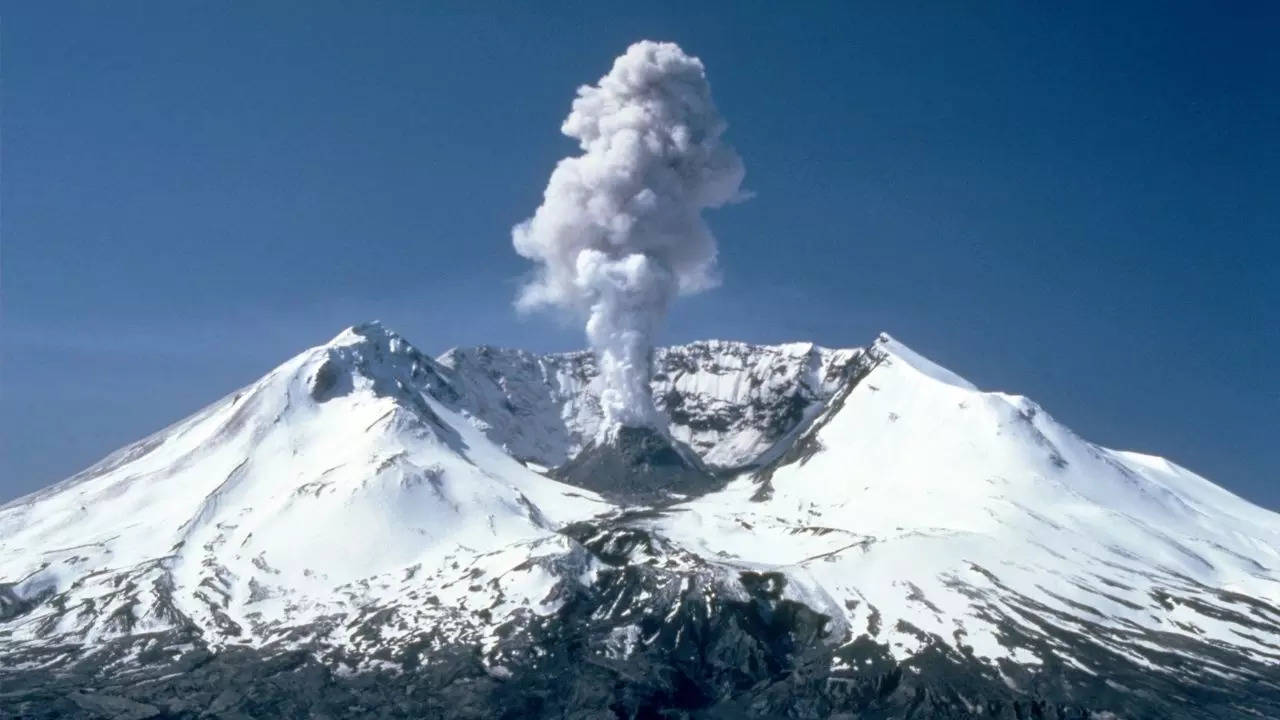A list of deadliest volcanoes in the world
Mount Vesuvius, Italy: The silent threat to Naples
History: Mount Vesuvius is infamous for its catastrophic eruption in 79 AD, which buried the Roman cities of Pompeii and Herculaneum under a thick layer of volcanic ash. This eruption killed thousands and preserved the cities in near-perfect condition.
Current Status: Vesuvius is considered one of the most dangerous volcanoes in the world due to its proximity to Naples, a city with over three million residents. Though it has been quiet since its last eruption in 1944, the potential for another explosive event keeps scientists on high alert.
Mount St. Helens, USA: The explosive power of the Pacific Northwest
History: Located in Washington State, Mount St. Helens is best known for its 1980 eruption, which was one of the most powerful in U.S. history. The eruption reduced the mountain’s height by over 1,300 feet, killed 57 people, and caused widespread destruction.
Current Status: Mount St. Helens remains one of the most closely monitored volcanoes in the world. It has shown signs of activity, such as small eruptions and earthquakes, indicating that it could erupt again in the future.
Mount Merapi, Indonesia: The fire mountain of Java
History: Mount Merapi is one of the most active volcanoes in Indonesia and has erupted regularly for centuries. Its 2010 eruption was particularly deadly, killing over 300 people and displacing thousands.
Current Status: Merapi continues to be active, with frequent eruptions that spew lava, ash, and toxic gases. Its proximity to the densely populated city of Yogyakarta makes it a constant threat to the local population.
Mount Etna, Italy: Europe’s most active volcano
History: Mount Etna, located on the island of Sicily, has been erupting for hundreds of thousands of years. Its continuous activity has shaped the landscape of the region and influenced local cultures and economies.
Current Status: Etna is one of the most active volcanoes in the world, with frequent eruptions that sometimes threaten nearby towns and villages. Its ongoing activity is closely monitored by volcanologists.
Mount Fuji, Japan: The sleeping giant near Tokyo
History: Mount Fuji is Japan’s tallest and most iconic mountain. Its last eruption occurred in 1707, during the Edo period, and covered parts of Tokyo in ash.
Current Status: Despite its calm appearance, Fuji is classified as an active volcano. Given its proximity to Tokyo, any future eruption could have devastating consequences for millions of people.
Kilauea, USA: Hawaii’s ever-flowing volcano
History: Kilauea is one of the most active volcanoes on Earth, located on Hawaii’s Big Island. Its continuous eruptions since 1983 have reshaped the landscape, creating new land and destroying homes.
Current Status: Kilauea’s activity is closely monitored by the United States Geological Survey (USGS). Its eruptions are usually non-explosive but can produce lava flows that threaten communities and infrastructure.
Mount Nyiragongo, DR Congo: The fastest lava flows
History: Mount Nyiragongo is known for its extremely fast-moving lava, which has devastated the nearby city of Goma multiple times, most notably in 2002 when it killed over 100 people and displaced hundreds of thousands.
Current Status: Nyiragongo remains highly active, with its lava lake frequently rising and falling. The threat of another deadly eruption is ever-present for the residents of Goma.
Mount Pinatubo, Philippines: The eruption that cooled the Earth
History: The 1991 eruption of Mount Pinatubo was one of the largest of the 20th century. It ejected vast amounts of ash and sulfur dioxide into the atmosphere, which temporarily cooled the Earth’s climate by 0.5°C.
Current Status: While Pinatubo has been quiet since 1993, the volcano is still considered active, and future eruptions could occur, posing risks to the surrounding communities.
Mount Tambora, Indonesia: The volcano that changed the world
History: The 1815 eruption of Mount Tambora was the most powerful in recorded history. It caused the “Year Without a Summer” in 1816, leading to widespread crop failures and food shortages around the world.
Current Status: Tambora remains active, though less so than in the past. Its potential for another large-scale eruption still concerns scientists.
Yellowstone Supervolcano, USA: A dormant giant
History: Yellowstone’s supervolcano has erupted three times in the past 2.1 million years, with each eruption significantly altering the global climate. The most recent eruption, 640,000 years ago, created the Yellowstone Caldera.
Current Status: While it has been dormant for thousands of years, the potential for another catastrophic eruption remains. Yellowstone is closely monitored for signs of activity, though scientists believe that another eruption is unlikely in the near future.
Also read:|Richest athletes in the world 2024
Source : Times of India






